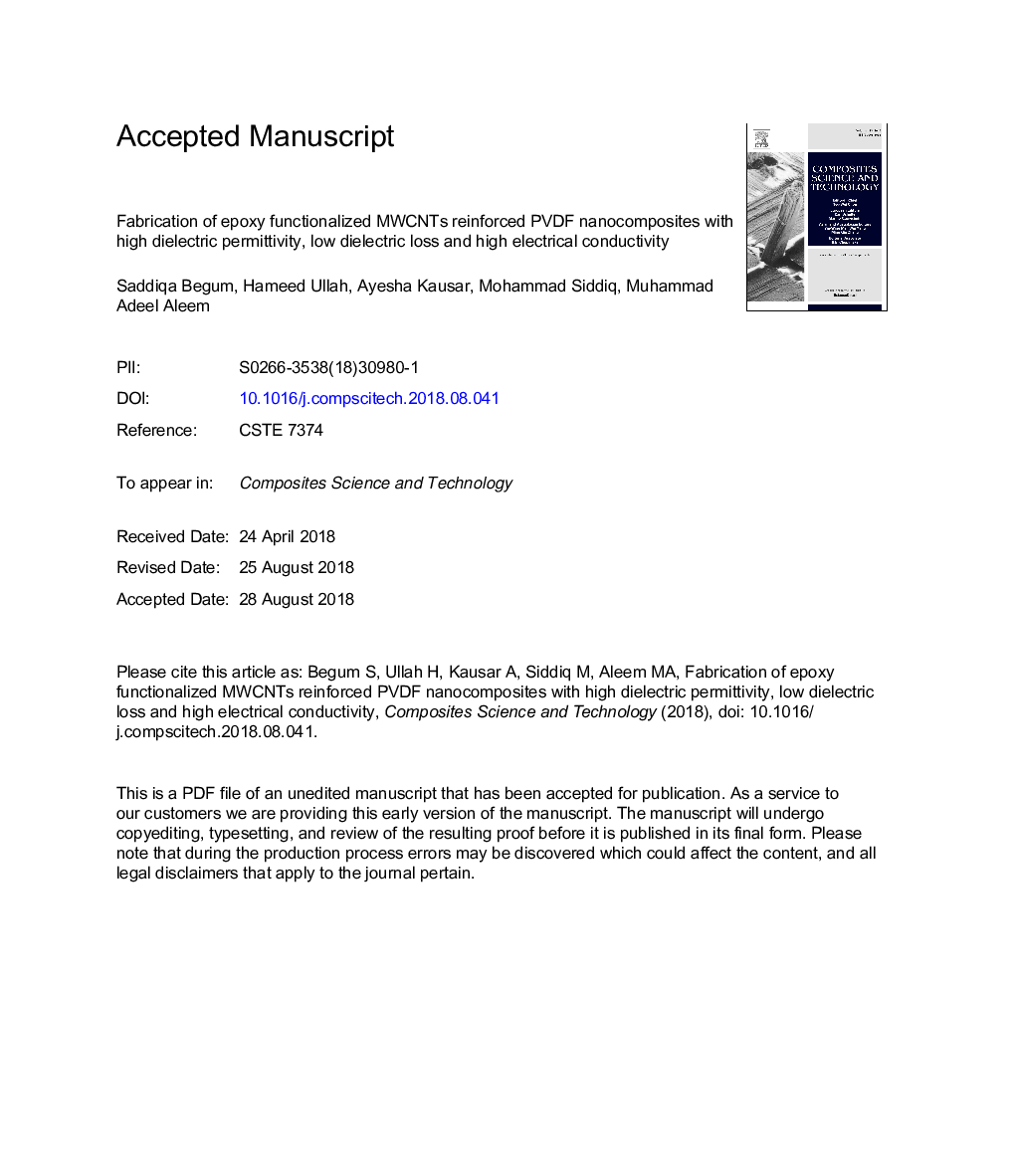| Article ID | Journal | Published Year | Pages | File Type |
|---|---|---|---|---|
| 11004271 | Composites Science and Technology | 2018 | 30 Pages |
Abstract
Nanocomposites of Polyvinylidene Flouride (PVDF) with Multi-walled Carbon Nanotubes (MWCNTs) possess excellent thermal, piezoelectric and conductive behaviors. However, the potential of MWCNTs as filler in polymer composites is hampered by their poor dispersion into the matrix, corresponding to the strong inter-tubular and weak inter tubular-polymer chain interactions. This issue is successfully overcome by utilizing di-glycidyl ether of bisphenol-A (DGEBA) grafted MWCNTs (DG-MWCNTs) as reinforcement in PVDF matrix. To synthesize the desired nanocomposites, the easier to manipulate, solution casting technique was employed. The resulting PVDF/DG-MWCNTs nanocomposites have different loadings of filler ranging from 1.0â¯wt% to 10â¯wt%, and have shown variation in the phase transformation from α-phase to β-phase along with improvements in thermal and dielectrical behaviors. It was revealed by the impedance spectroscopy (IS) that the reinforcement of PVDF with DG-MWCNTs leads to an increase in the dielectric permittivity. This increase was found higher enough to reach up to â¼5288 (at â¼100â¯Hz) and 214 (at â¼102â¯Hz) for filler loading of 10â¯wt %. The increase is several hundreds of magnitude i.e., â¼204â¯at â¼102â¯Hz higher than the PVDF matrix, while retaining a low level conductivity (4.18â¯Ãâ¯10â6â¯S/cm). This enhancement in the dielectric permittivity is attributed to the strong interfacial interaction between PVDF and DG-MWCNTs, and was explained by the Maxwell-Wagner-Sillar (MWS) effect.
Related Topics
Physical Sciences and Engineering
Engineering
Engineering (General)
Authors
Saddiqa Begum, Hameed Ullah, Ayesha Kausar, Mohammad Siddiq, Muhammad Adeel Aleem,
